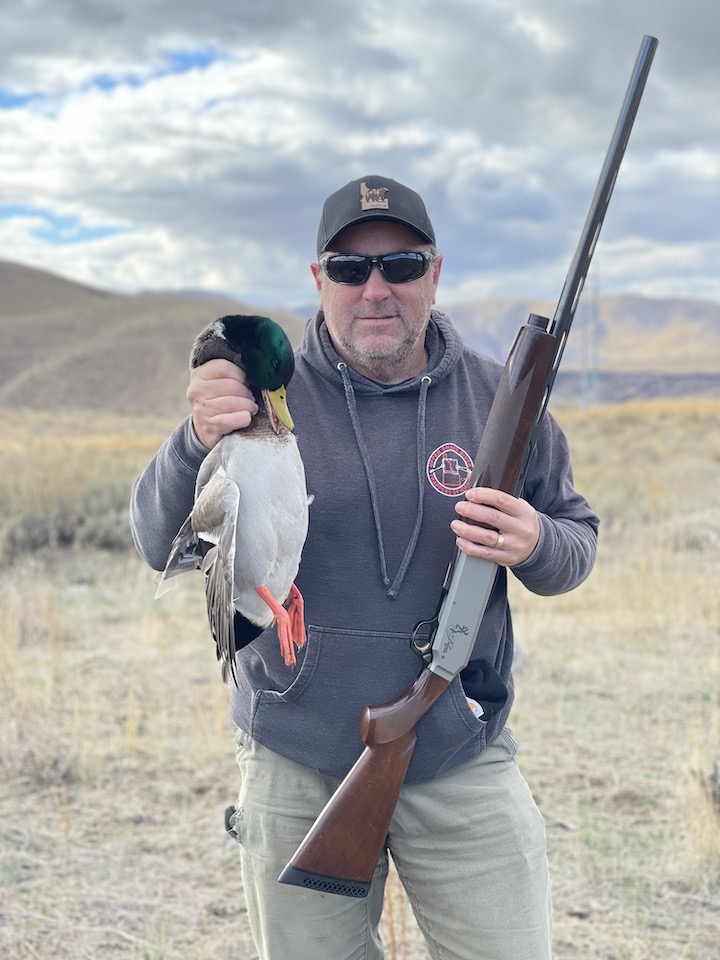
BY TIM E. HOVEY
Just like every year, the end of January signals the end of hunting season for most game animals. Hopefully you’ve put a deer or two in the freezer, or you’ve had a few successful upland hunts, and you have a few birds stored away for the smoker. Whatever you chase, squeezing out a few more hunts before the season shuts down can be productive and relatively crowd free.
In a lifetime of hunting everything open to the western hunter, I’ve noticed a slight seasonal trend. Most of the hunting activity is centered around the season opener and steadily declines as the season continues. With species that have lengthy seasons like waterfowl, you may have a spot or two all to yourself towards the end of the season as interest dies down.
Last week I decided to head out and see if I could get into some ducks at some of my favorite jump shooting spots. My goal was simple; I wanted to hit each spot, hunt the pond and then move onto the next spot. I plotted out my course for the hunt and knew that I could be gone all day.

My method for late season waterfowl hunting, especially jump shooting requires a good set of binoculars, my shotgun and a set of waders. The spots I wanted to visit weren’t very big and ranged in size from relatively small ponds to wet culverts. Ideally, I want to find a spot where I can glass the body of water from a distance to see if there are waterfowl on the pond. If ducks were present, I’d plan to jump shoot it.
My first stop was a collection of four small ponds located on public land. Each of the water bodies don’t hold a lot of water, but they have proven to draw waterfowl earlier in the season. I pulled to my glassing spot and found the first small pond empty. As I was glassing, a dozen mallards flew over my head and headed for one of the other ponds. I felt like they had planned to land in the pond I was glassing but had seen me approach and changed course. I watched them drop into the second pond.

LUCKY DOUBLE – This male and female mallard pair was dropped with one lucky shot by the author. Opportunities abound late in the season. TIM E. HOVEY PHOTO
I relocated, got my gear and snuck up to the second pond. From experience, I knew where most of the water was in the second pond, so I stalked into the area quietly. About eight from the pond edge, the birds knew danger was close and got up all at once. For whatever reason, they chose an escape route right over my head. My first shot was a rushed miss, but the next shot connected with a trailing mallard, folding it in the air and dropping it heavily on the dry bank. Out of range, a third shot never came.
I grabbed the duck, dropped the fat mallard in the cooler and headed to one of the other ponds. Before I even parked, I decided to put down the Browning 12 gauge, and grab my Ruger 20 gauge over and under. The Ruger was given to me by my late friend Ken Purdue, and I wanted to hunt with it again in his memory.
From a glassing point I was able to spot a few more ducks in the next pond over. I drove closer and parked unnoticed. I stuffed a couple of shells in my pocket, loaded the Ruger and said, “let’s go get them, Ken!”

LATE SEASON – Small bodies of water will hold waterfowl late in the season. Planning a day hunt around these holding areas can be successful. TIM E. HOVEY PHOTO
This pond had a high bank, which made stalking close easy. I climbed the bank, switched the safety off and quickly peaked over the top. I caught the ducks completely by surprise. The small group of six lifted off the water a short 30-feet away. I sighted down Ken’s gun and lined up the lead bird and squeezed the trigger. To my surprise, two birds folded and landed only feet from the bank.
I hunted a few more spots that day and while the shooting could’ve been better, I didn’t load any more ducks into the cooler. That didn’t matter to me. I hunted where I wanted and didn’t see another hunter all day. I got lucky and executed a two-for-one shot with a good friend’s gifted shotgun. It was truly a great day.

For as long as I can remember, I’ve looked forward to the eleventh hour of the hunting season. I’ve seen more crowd-free hunting opportunities and experienced lots of great hunts towards the end of the season to make it a regular occurrence for me each year.
Late season waterfowl hunting doesn’t have to be an all-day affair, and if you plan correctly, you don’t have to sit in one spot to be successful. Pick your spots and your shots, and there’s plenty of adventure left before the season shuts down at the end of the month. Even with the end of the season looming, this is one of my favorite times to hunt.



